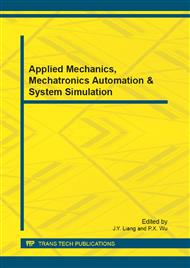p.133
p.137
p.141
p.146
p.150
p.154
p.158
p.162
p.167
Derivation of Major Factors of Beams Made of H-Sections for Fire Engineering Design
Abstract:
Structural steel has been used to make building structures higher and wider than that constructed with conventional structural materials such as concrete, brick, etc since 1960’s in Korea. But the steel structure has fatal demerits. One is the deteriation of structural performance when exposed to severe fire and the other is rusting. The structural behavior has to be sustained during unexpected fire and this can be done by fire design. The fire design consists of two methods. One is prescriptive and the other is performance-base fire engineering design. Recently, the fire engineering design has become a reasonable alternative against the prescriptive method in the world. But the fire engineering method is now preparing for adoption into Korea building regulation. The main purpose of this paper is to build the databases of fire resistant and limiting temperatures of beams made of H-section and the results from fire tests under loadings showed that the corelations between the limiting temperatures and load ratios applied were in reverse proportion.
Info:
Periodical:
Pages:
150-153
Citation:
Online since:
September 2012
Authors:
Price:
Сopyright:
© 2012 Trans Tech Publications Ltd. All Rights Reserved
Share:
Citation:


